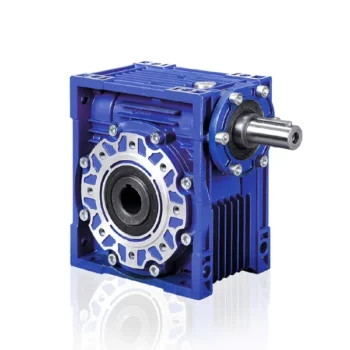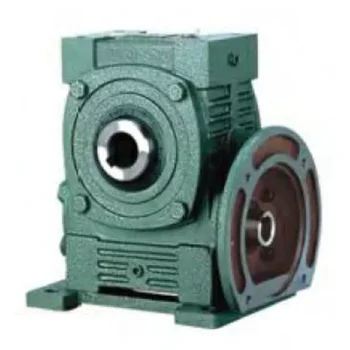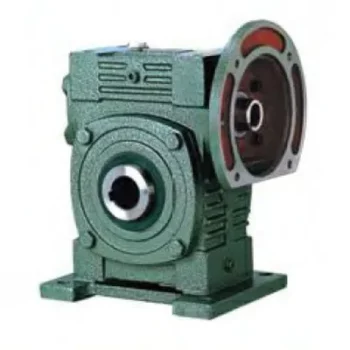Product Description
The K-series gearbox is a product of SEW-EURODRIVE It is a right-angle speed reducer with a helical gear and worm gear combined drive system, designed and optimized according to international standards. The S-series gearbox provides higher efficiency than worm gearboxes and also lower noise during operation It is widely applied in robots, CNC machines, welding equipment, plastic machines, packaging and printing machinery, textile and dyeing machinery, construction machinery, communications, and other fields, especially suitable for frequent starting occasions
The S-series gearbox is available in several sizes and design variants, including foot-mounted, flange-mounted, and torque arm-mounted options. Input can be provided through a motor, an IEC flange input, or a shaft input. Output can be provided through a CHINAMFG shaft or a hollow shaft
The housing of the K-series gearbox is made of HT250 high-strength cast iron. The worm gear is made of high-quality copper, while the gears are made of 20CrMnTi. The surface hardness of the gears is HRC58-62. The input/output shaft is made of 40Cr steel. The gearbox undergoes carburizing and quenching heat treatment to improve its durability
The bearings used in the K-series gearbox are from C&U or other reputable brands. The oil seal is from CHINAMFG or other reputable brands. The lubricating oil used in the gearbox is gear oil. The gearbox is packed in a plywood case for safe transportation
The K-series gearbox has several features that make it an attractive choice for many applications. Its simple design makes it cost-effective. It has strong vibration absorption capabilities and operates at low temperatures. It also operates with low noise levels. A wide range of speed ratios is available to choose from. The gearbox can function on its own under certain conditions. It has good sealing properties and is resistant to corrosion, making it suitable for use in harsh conditions. It can also be combined with the R series helical gear reducer for additional functionality
In summary, the K-series gearbox from SEW-EURODRIVE is a versatile and reliable right-angle speed reducer that provides high efficiency and low noise operation. Its wide range of design variants and options make it suitable for use in many different applications, especially those that require frequent starting. Its robust construction and high-quality materials ensure its durability and longevity.
| Application: | Motor, Electric Cars, Motorcycle, Machinery, Marine, Toy, Agricultural Machinery, Car |
|---|---|
| Function: | Distribution Power, Clutch, Change Drive Torque, Change Drive Direction, Speed Changing, Speed Reduction, Speed Increase |
| Layout: | Coaxial |
| Hardness: | Hardened Tooth Surface |
| Installation: | Horizontal Type |
| Step: | Three-Step |
| Samples: |
US$ 100/Piece
1 Piece(Min.Order) | |
|---|

Is it Possible to Reverse the Direction of a Worm Gearbox?
Yes, it is possible to reverse the direction of a worm gearbox by changing the orientation of either the input or output shaft. However, reversing the direction of a worm gearbox can have some implications that need to be considered:
- Efficiency: Reversing the direction of a worm gearbox can potentially affect its efficiency. Worm gearboxes are typically more efficient in one direction of rotation due to the design of the worm and worm wheel.
- Backlash: Reversing the direction of rotation might lead to increased backlash or play in the gearbox, which can impact precision and smooth operation.
- Lubrication: Depending on the gearbox’s design, reversing the direction could affect lubrication distribution and lead to uneven wear on the gear teeth.
- Load: Reversing the direction might also impact the gearbox’s load-carrying capacity, especially if it’s designed for predominantly one-way operation.
- Noise and Vibration: Direction reversal can sometimes result in increased noise and vibration due to changes in gear engagement and meshing behavior.
If you need to reverse the direction of a worm gearbox, it’s advisable to consult the gearbox manufacturer’s guidelines and recommendations. They can provide insights into whether the specific gearbox model is suitable for reversible operation and any precautions or adjustments needed to ensure proper functioning.

Worm Gearbox vs. Helical Gearbox: A Comparison
Worm gearboxes and helical gearboxes are two popular types of gear systems, each with its own set of advantages and disadvantages. Let’s compare them:
| Aspect | Worm Gearbox | Helical Gearbox |
| Efficiency | Lower efficiency due to sliding friction between the worm and worm wheel. | Higher efficiency due to rolling contact between helical gear teeth. |
| Torque Transmission | Excellent torque transmission and high reduction ratios achievable in a single stage. | Good torque transmission, but may require multiple stages for high reduction ratios. |
| Noise and Vibration | Generally higher noise and vibration levels due to sliding action. | Lower noise and vibration levels due to smoother rolling contact. |
| Backlash | Higher inherent backlash due to the design. | Lower backlash due to meshing of helical teeth. |
| Efficiency at Higher Speeds | Less suitable for high-speed applications due to efficiency loss. | More suitable for high-speed applications due to higher efficiency. |
| Overload Protection | Natural self-locking feature provides some overload protection. | May not have the same level of inherent overload protection. |
| Applications | Commonly used for applications requiring high reduction ratios, such as conveyor systems and heavy-duty machinery. | Widely used in various applications including automotive transmissions, industrial machinery, and more. |
Both worm and helical gearboxes have their place in engineering, and the choice between them depends on the specific requirements of the application. Worm gearboxes are preferred for applications with high reduction ratios, while helical gearboxes are chosen for their higher efficiency and smoother operation.

Types of Worm Gear Configurations and Their Uses
Worm gear configurations vary based on the arrangement of the worm and the gear it engages with. Here are common types and their applications:
- Single Enveloping Worm Gear: This configuration offers high torque transmission and efficiency. It’s used in heavy-duty applications like mining equipment and industrial machinery.
- Double Enveloping Worm Gear: With increased contact area, this type provides higher load capacity and improved efficiency. It’s used in aerospace applications, robotics, and precision machinery.
- Non-Throated Worm Gear: This type has a cylindrical worm without a throat. It’s suitable for applications requiring precise motion control, such as CNC machines and robotics.
- Throated Worm Gear: Featuring a throat in the worm, this configuration offers smooth engagement and higher load capacity. It’s used in conveyors, elevators, and automotive applications.
- Non-Modular Worm Gear: In this design, the worm and gear are a matched set, resulting in better meshing and efficiency. It’s utilized in various industries where customization is essential.
- Modular Worm Gear: This type allows interchangeability of worm and gear components, providing flexibility in design and maintenance. It’s commonly used in conveyors, mixers, and material handling systems.
Selecting the appropriate worm gear configuration depends on factors such as load capacity, efficiency, precision, and application requirements. Consulting gearbox experts can help determine the best configuration for your specific needs.


editor by CX 2023-09-27